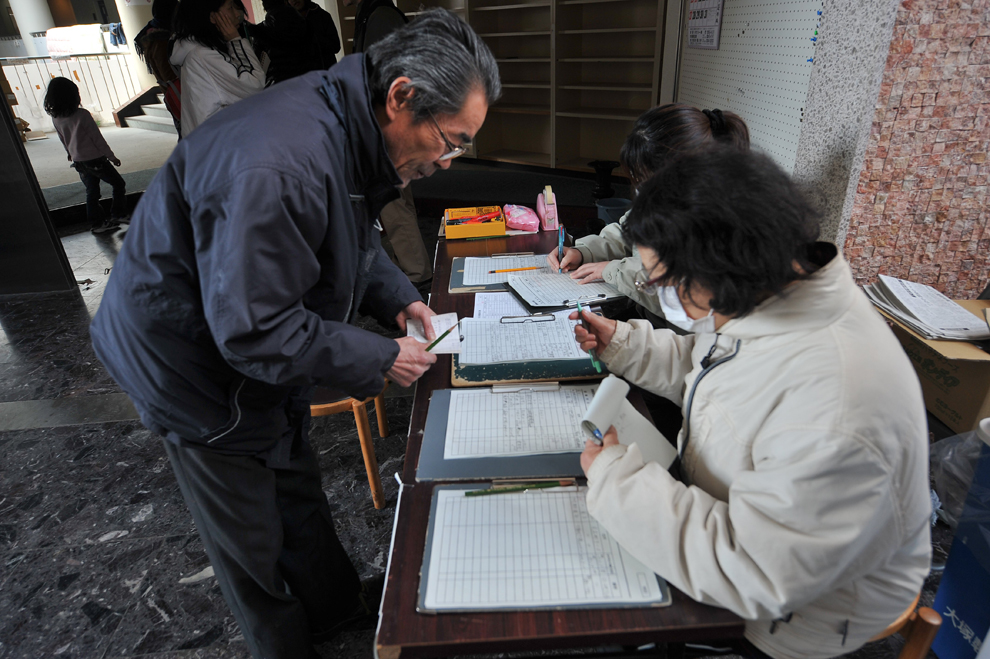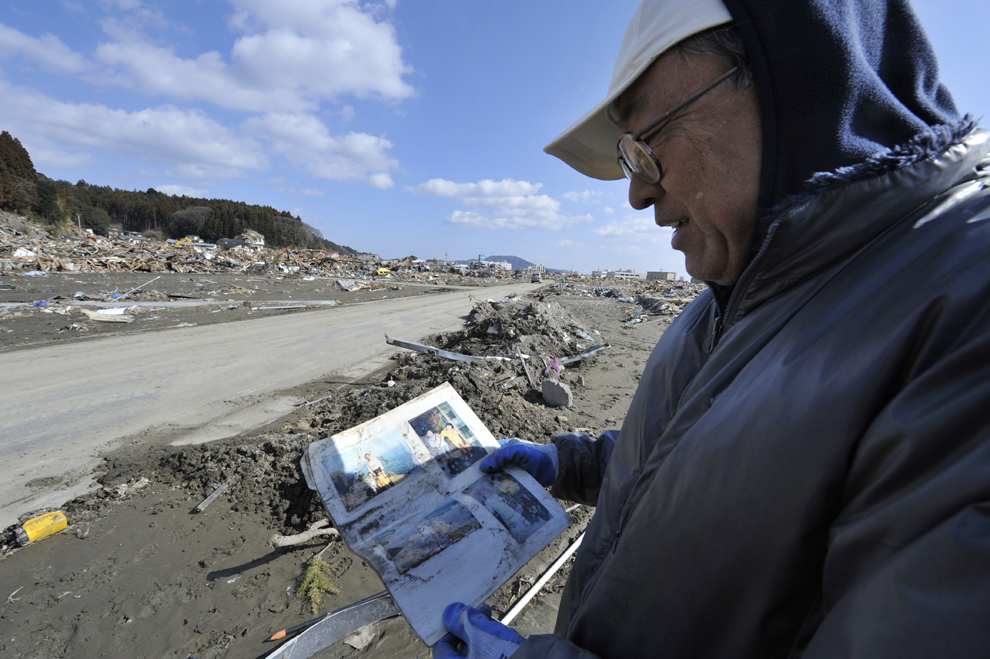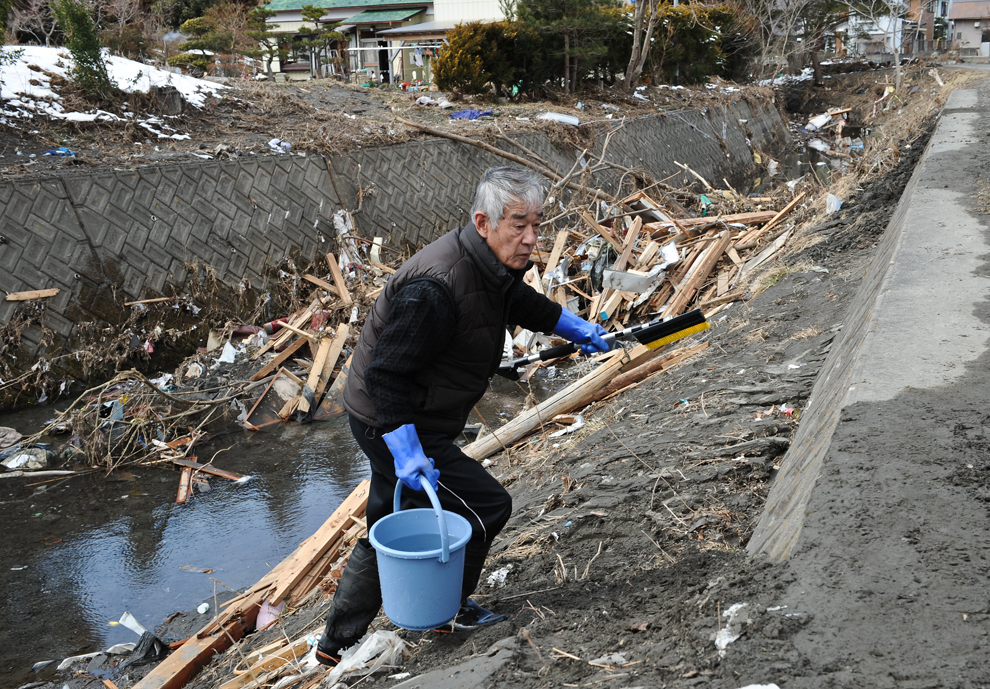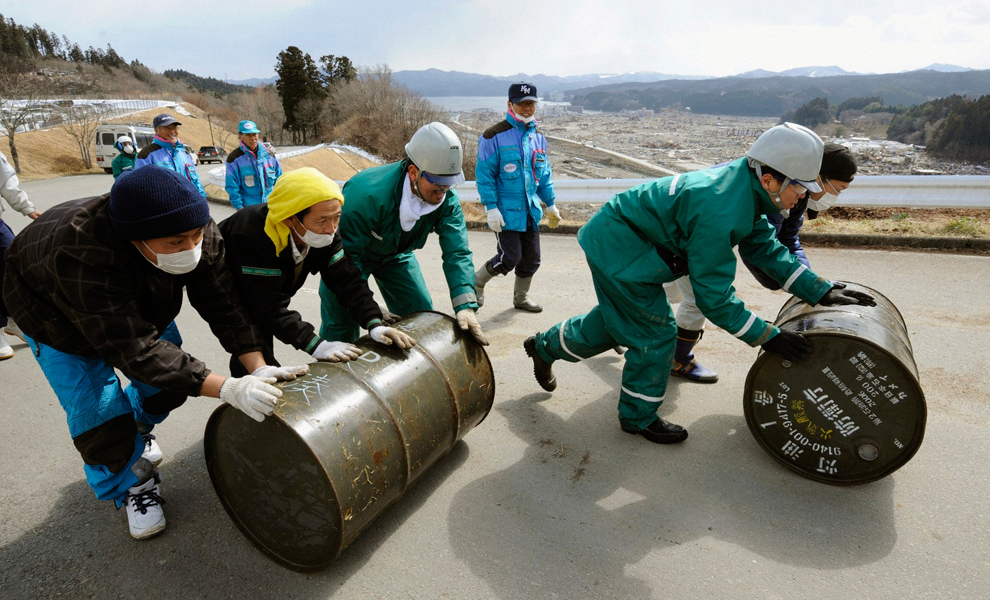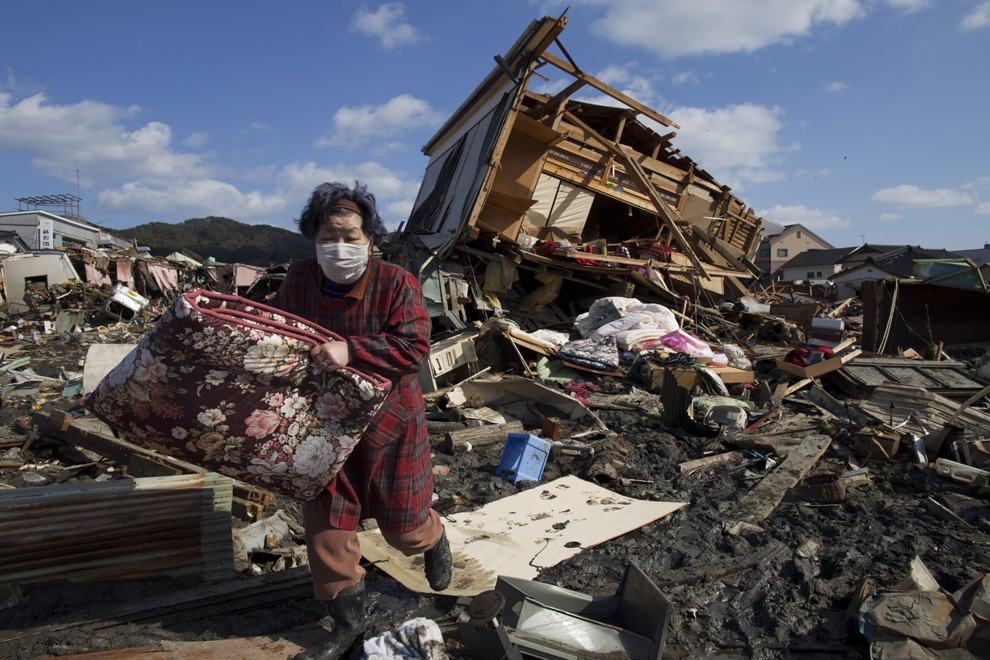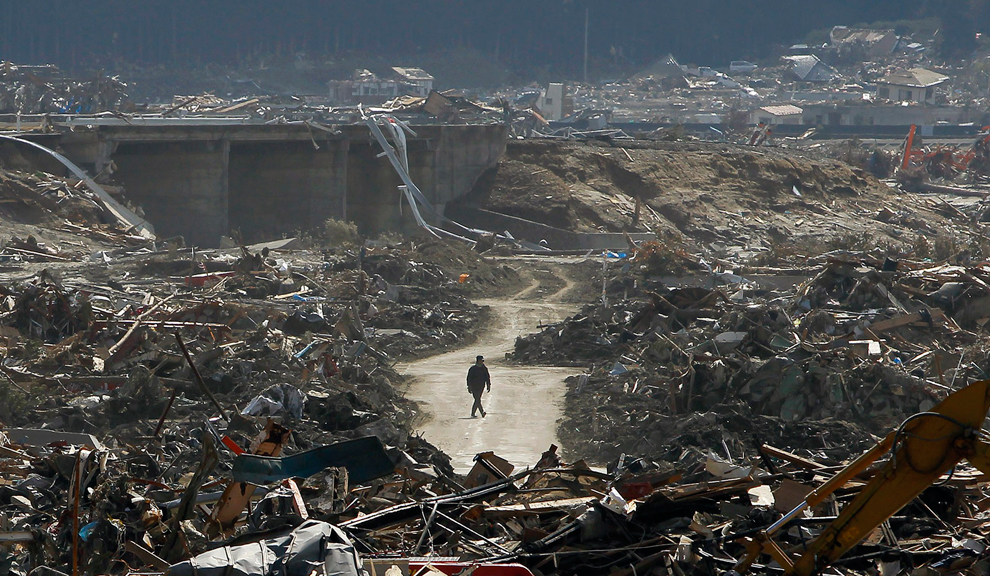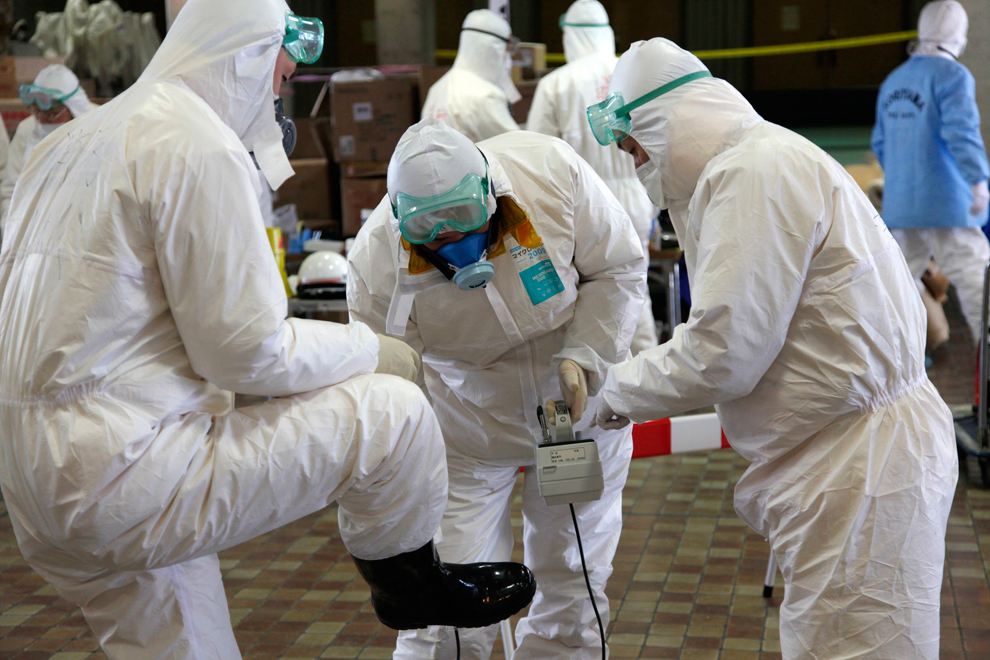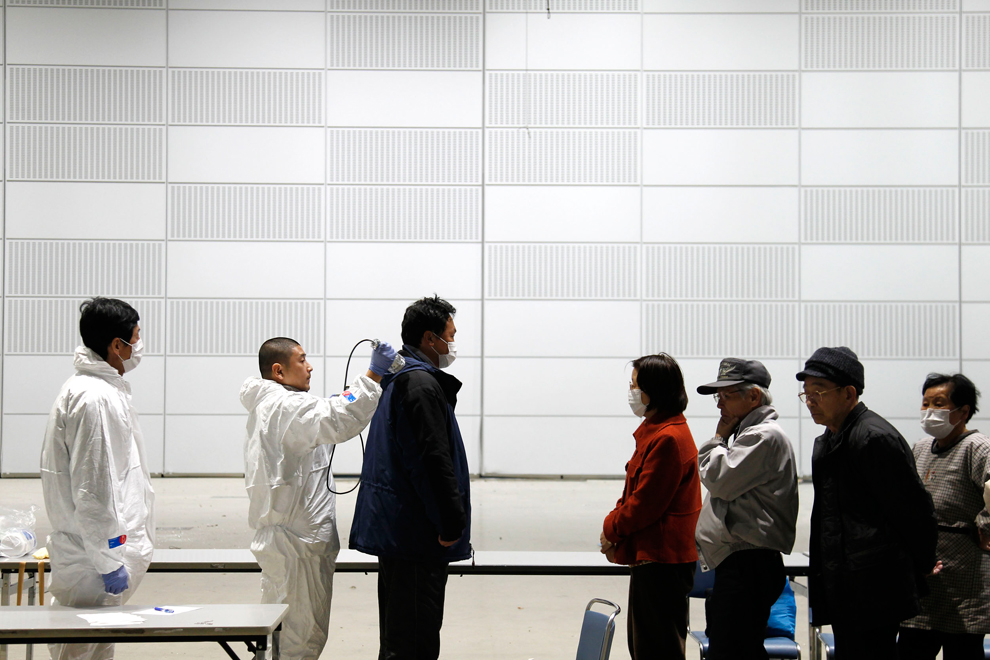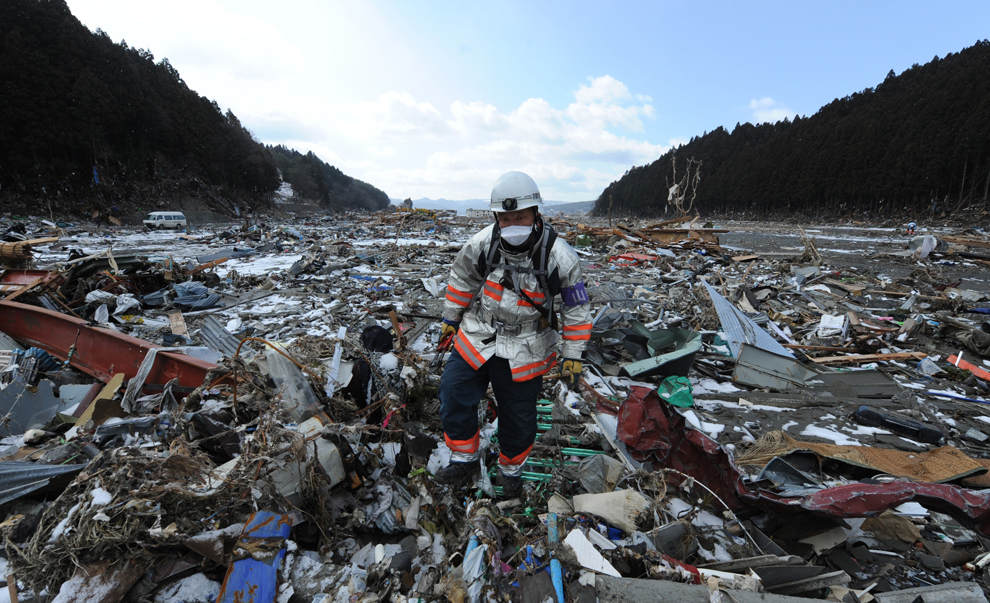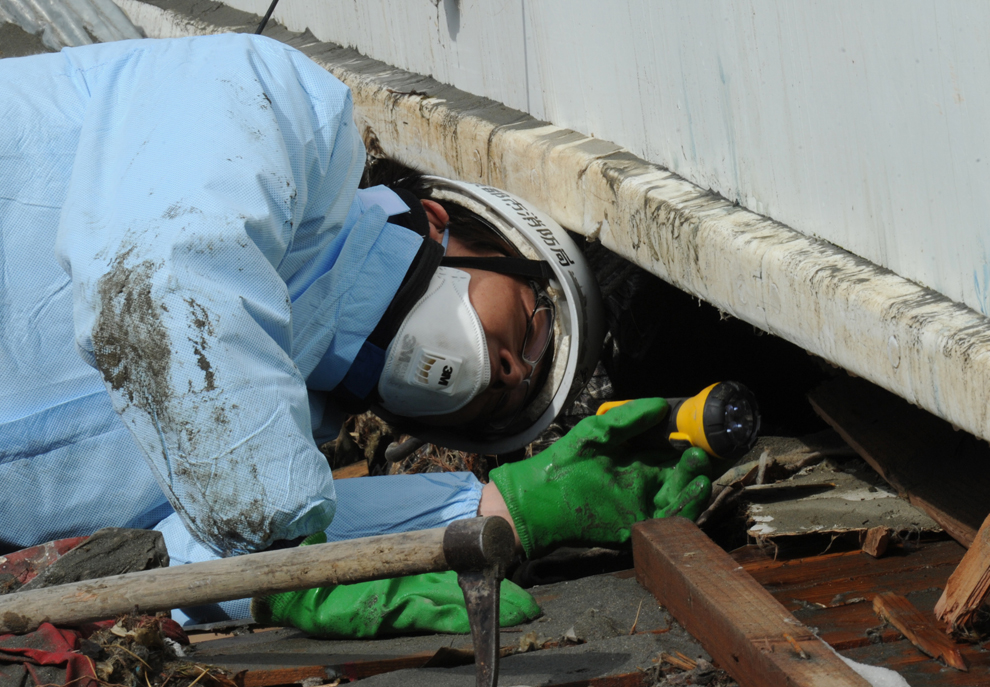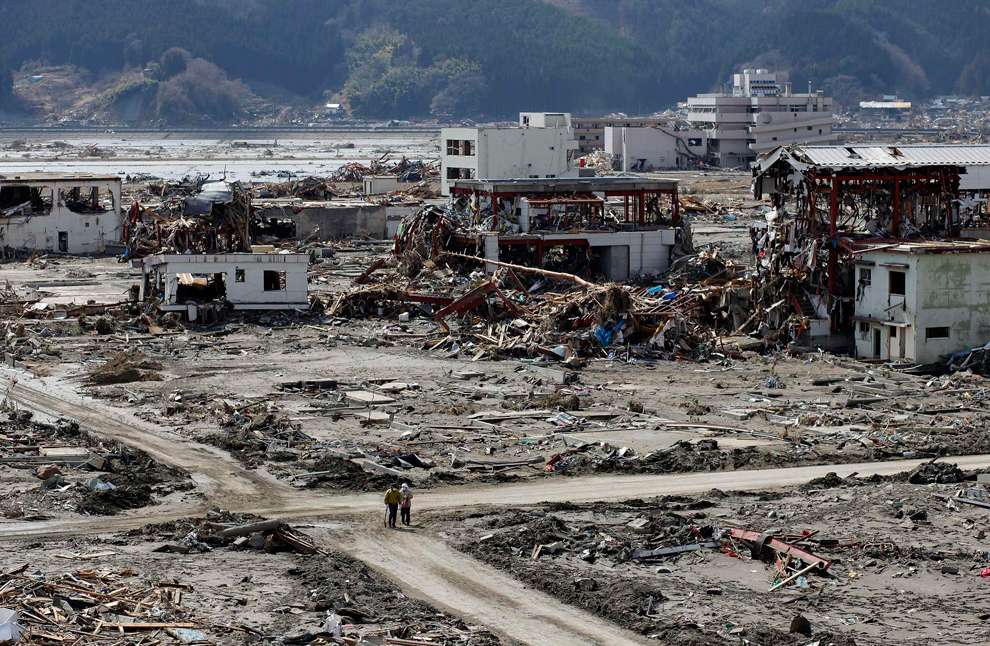A week after a 9.0 earthquake and resulting tsunami leveled large swaths of northeastern Japan, effects of the disaster are still rippling across the country and the world. Misery of the victims continues unabated, as shelter, food, water, and fuel have become dear. A nuclear facility crisis has both troops and workers scrambling to keep the situation from getting worse, while foreign governments are urging their citizens to evacuate. -- Lane Turner

Momoko Onodera prays at an evacuation center as she talks about her husband who died in the tsunami on March 18 in Kesennuma, Japan. A potential humanitarian crisis looms as nearly half a million people who have been displaced by the disaster continue to suffer a shortage of food and fuel as freezing weather conditions set in. (Paula Bronstein/Getty Images)

An elderly woman and a relative are reunited at a center for displaced persons in the devastated town of Otsuchi, Iwate prefecture on March 18 one week after a massive 9.0 magnitude earthquake and tsunami hit the northestern coast of Japan's main island of Honshu. (Nicholas Kamm/AFP/Getty Images) #

A two-month old baby evacuated along with his parents from the town of Okuma, Fubata district in Fukushima prefecture where the TEPCO Fukushima Daiichi nuclear power plant, is given a bath by a volunteer, Junko Sakamoto in Koriyama city in Fukushima prefecture on March 18. (Go Takayama/AFP/Getty Images)#
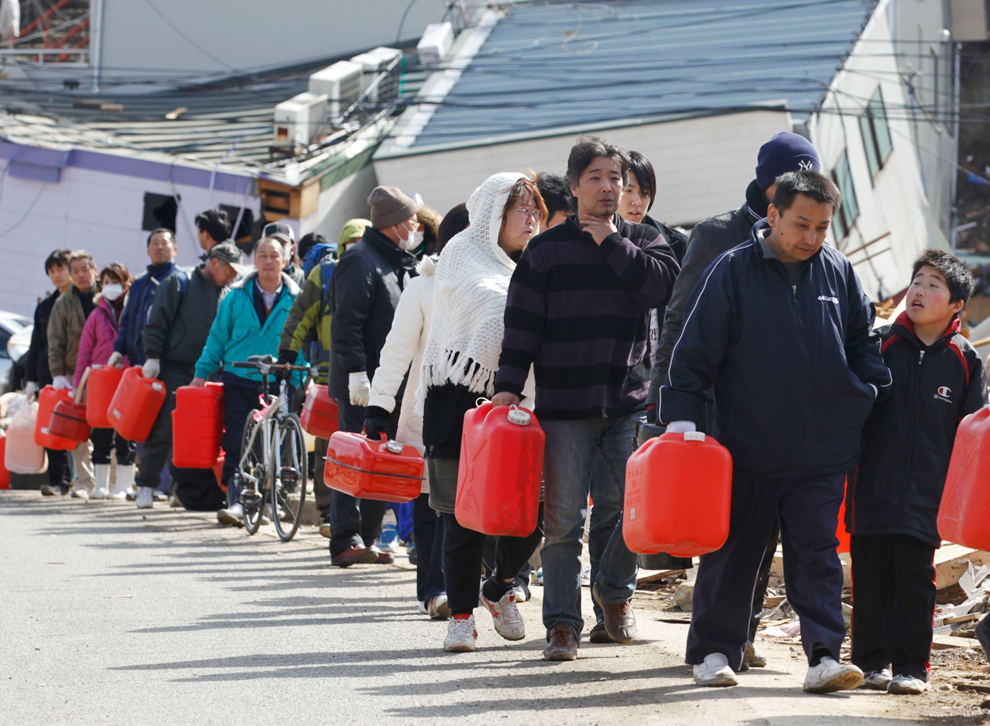
People queue to buy gasoline at a destroyed village in Ofunato, Iwate Prefecture March 18. The shutdown of a fifth of Japan's nuclear power capacity and nearly a third of its refining capacity following last week's killer quake and tsunami has resulted in a fuel shortage in the country. (Lee Jae-Won/Reuters) #
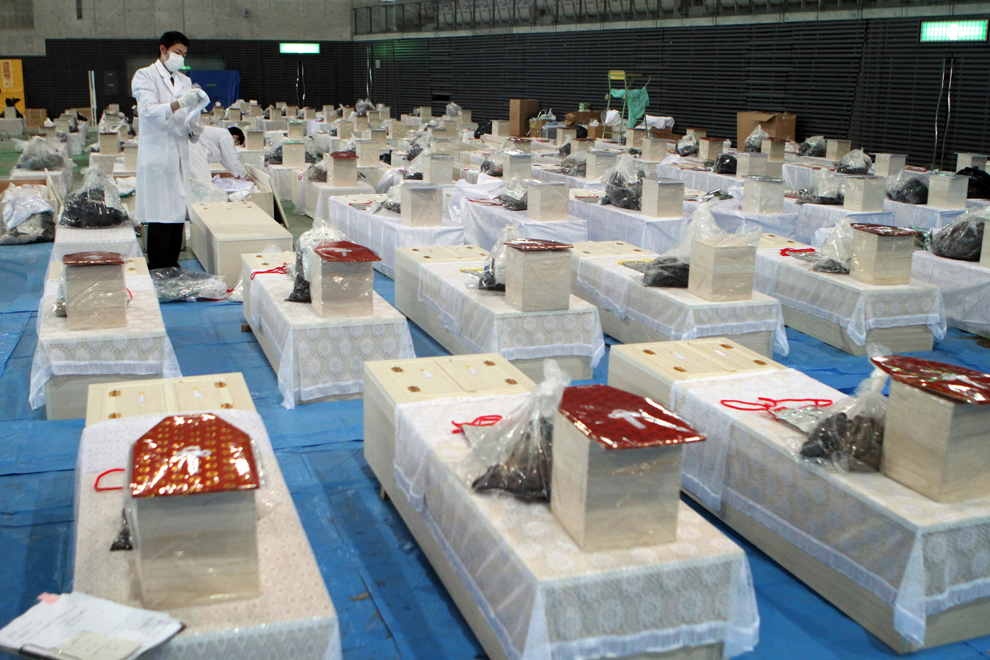
Dozens of coffins are pictured on the floor of a hall in the town of Rifu in Miyagi prefecture on March 18. The official number of dead and missing after the devastating earthquake and tsunami that flattened Japan's northeast coast a week ago has topped 16,600, with 6,405 confirmed dead. (JIJI PRESS/AFP/Getty Images) #
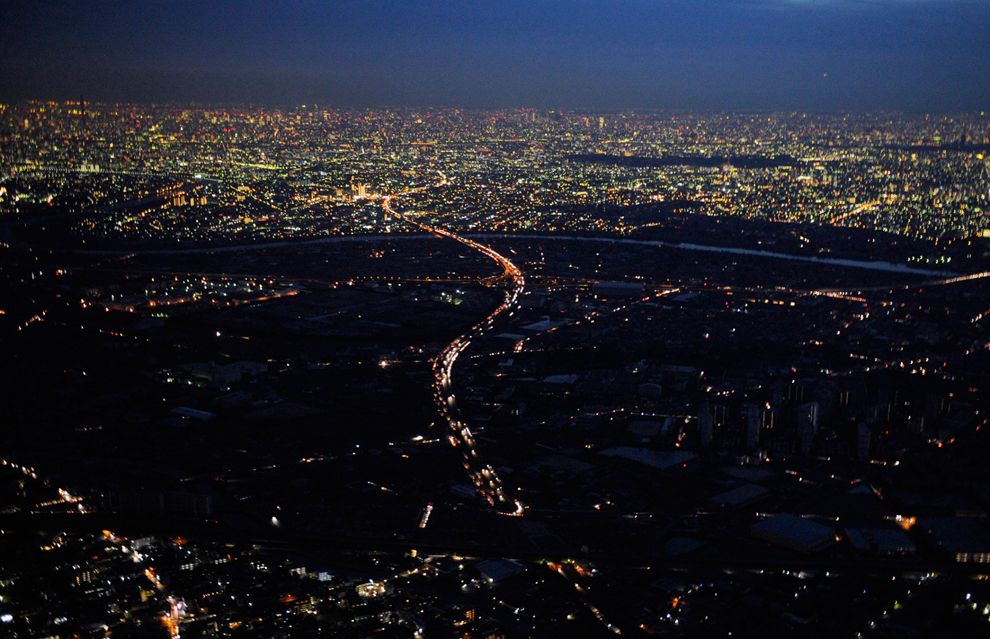
Lights are turned off during rolling blackouts in Misato City, Saitama Prefecture on March 18. Tokyo Electric Power Co has announced rolling blackouts after its power generation was cut due to damage to its Fukushima Daiichi power plant, where it is struggling to prevent reactor meltdowns. (Reuters/Kyodo) #

A satellite image shows damage to the reactors at the Fukushima Dai-Ichi nuclear power plant at the town of Okuma in Futaba district in Fukushima. Teams of Japanese workers and troops on March 18 battled to prevent meltdown at the quake-hit nuclear plant as alarm over the disaster grew with more foreign governments advising their citizens to flee. (DigitalGlobe/AFP/Getty Images) #


